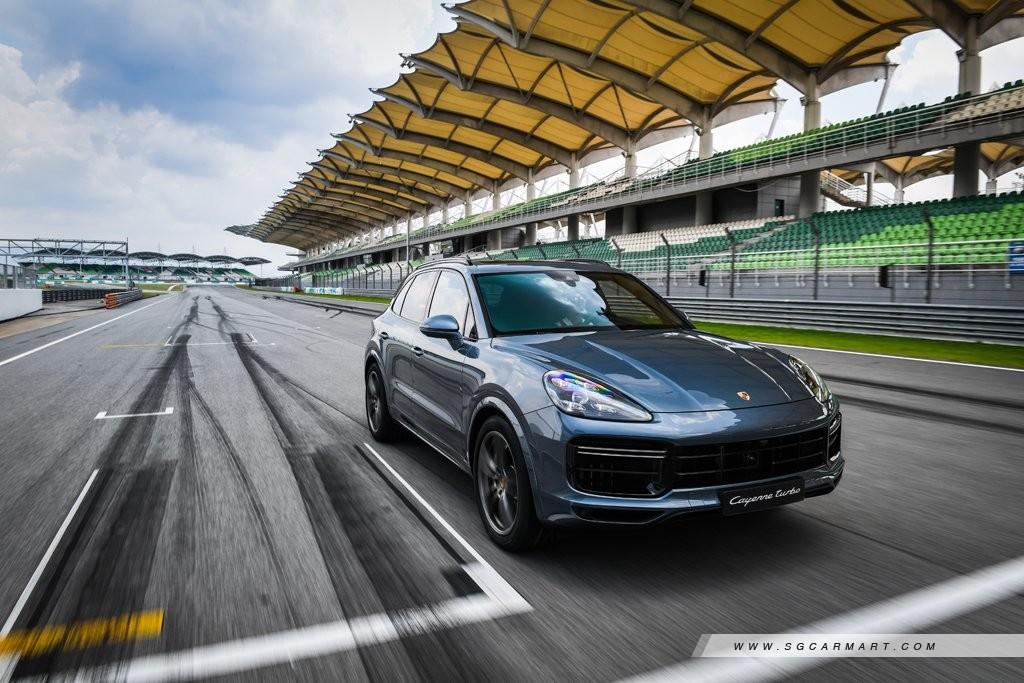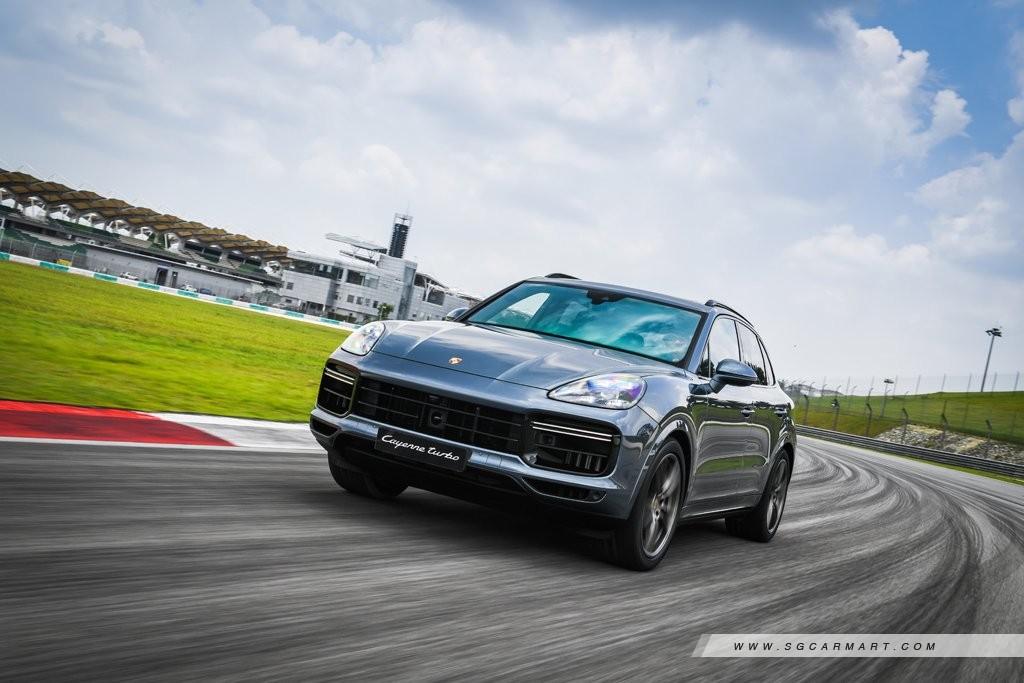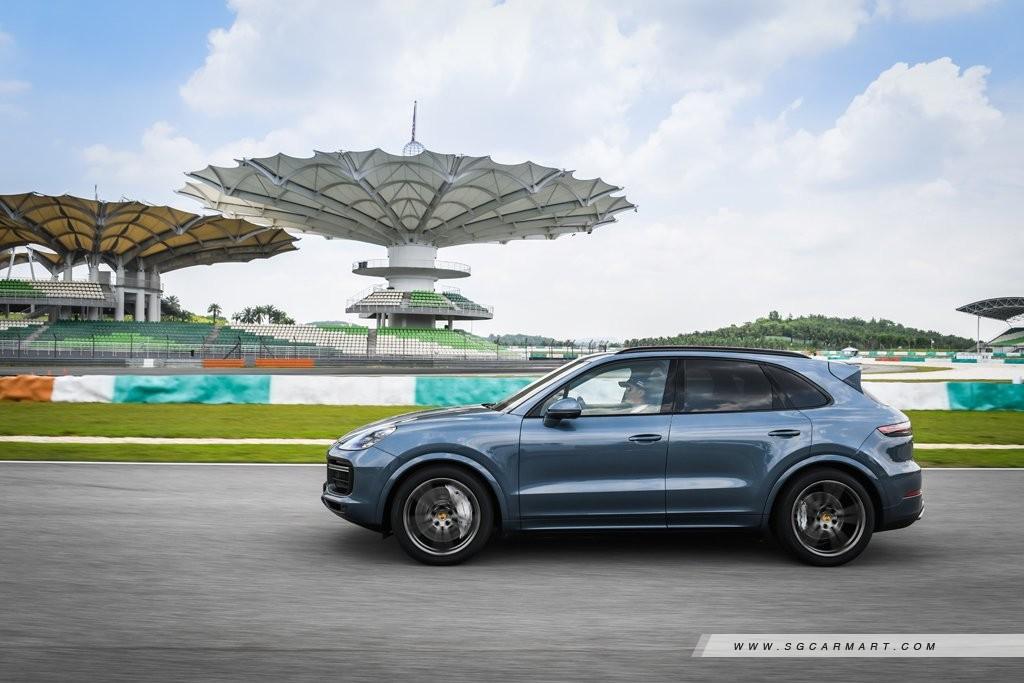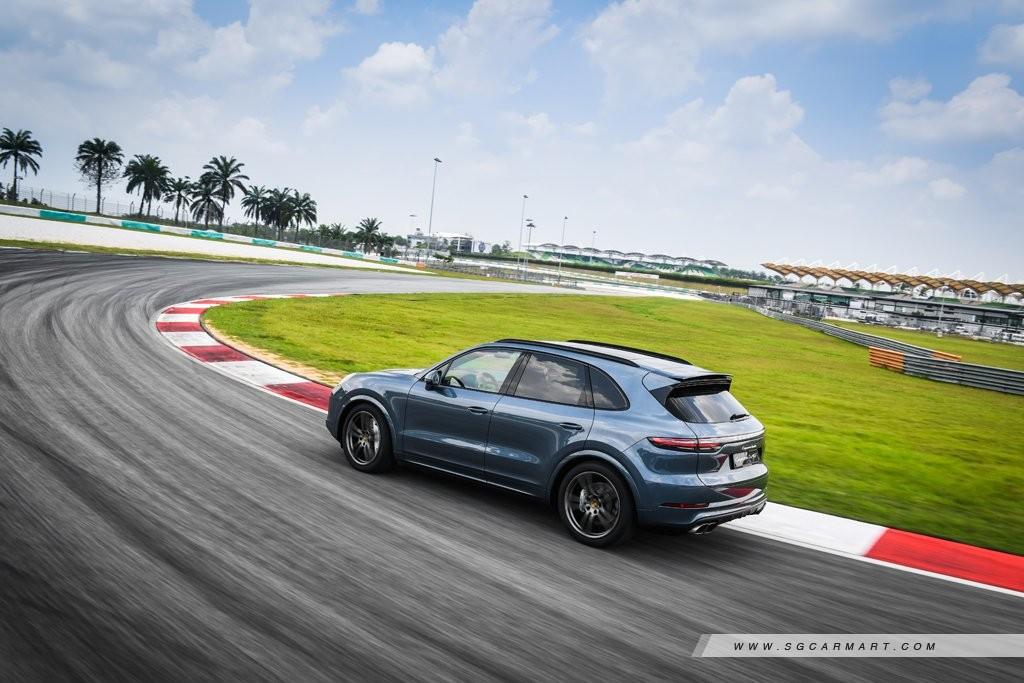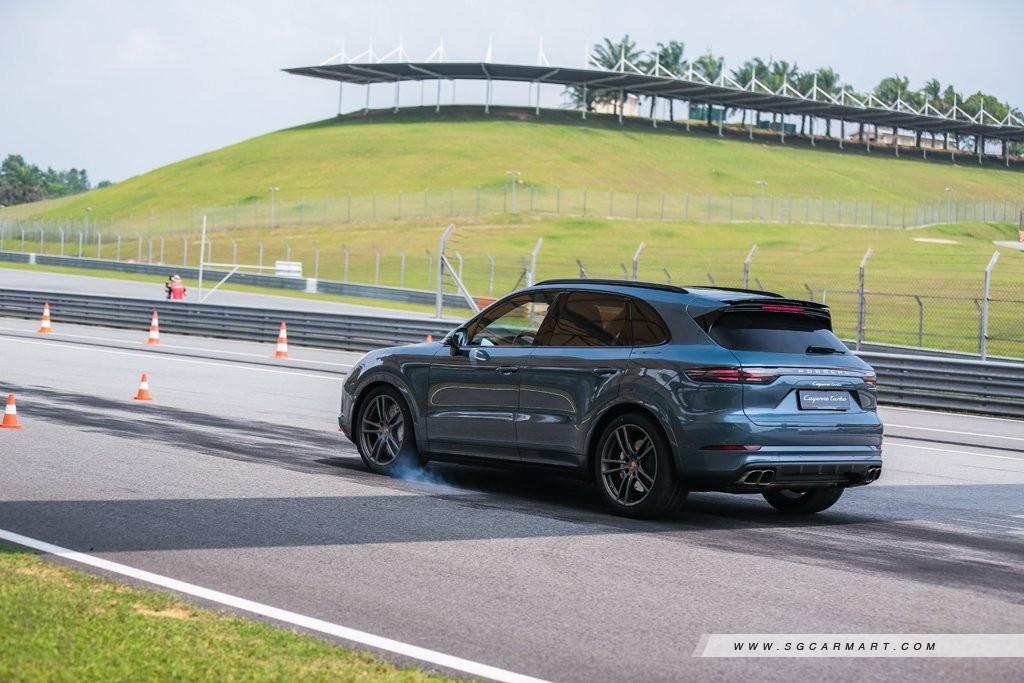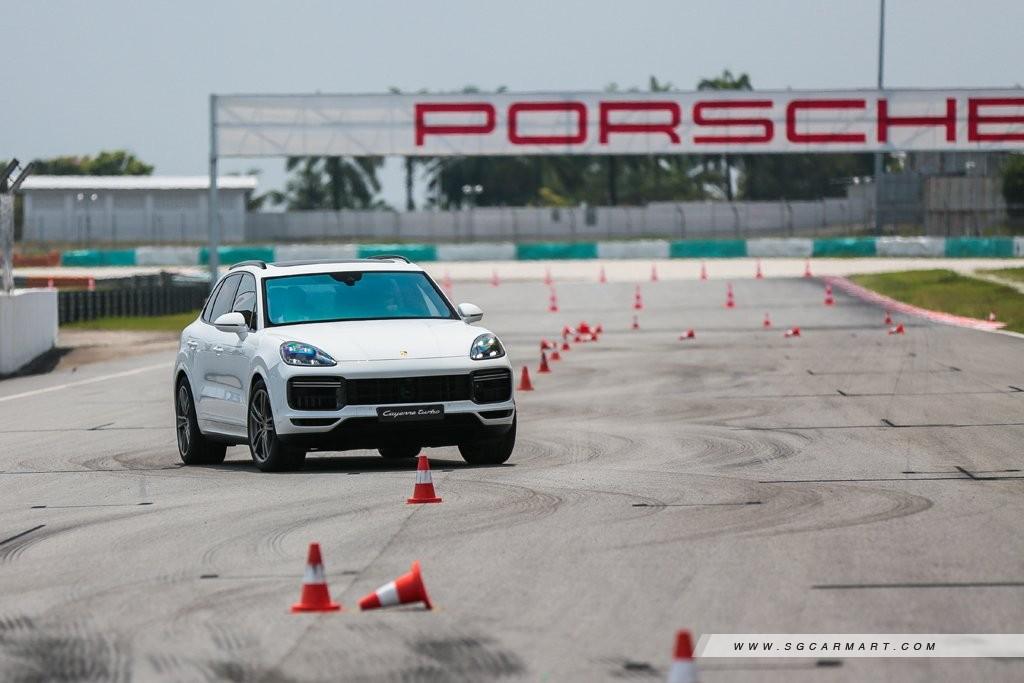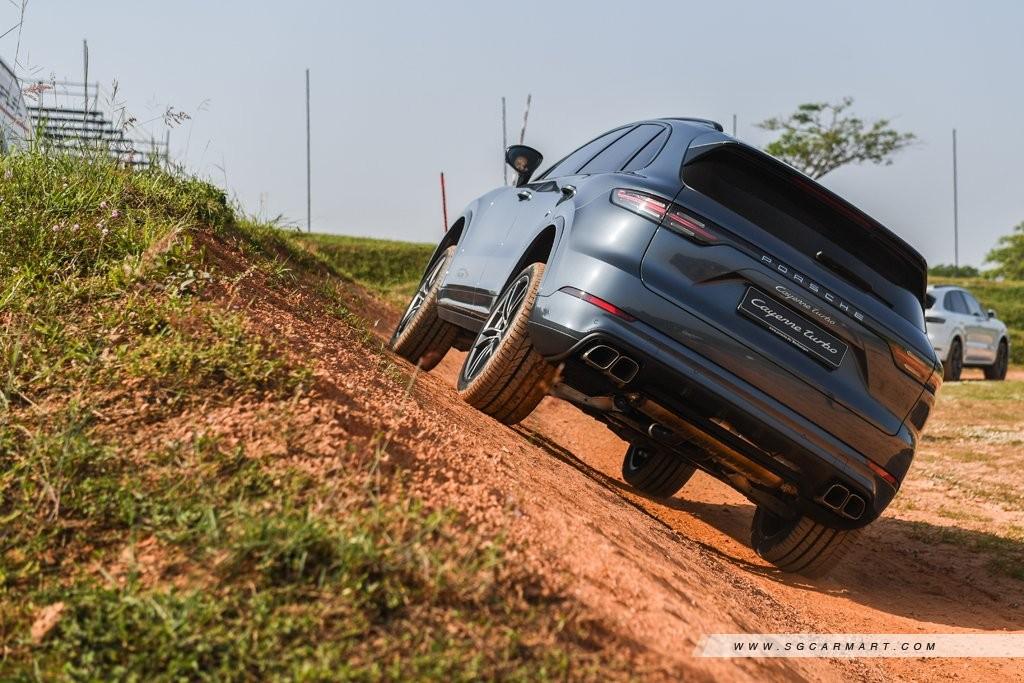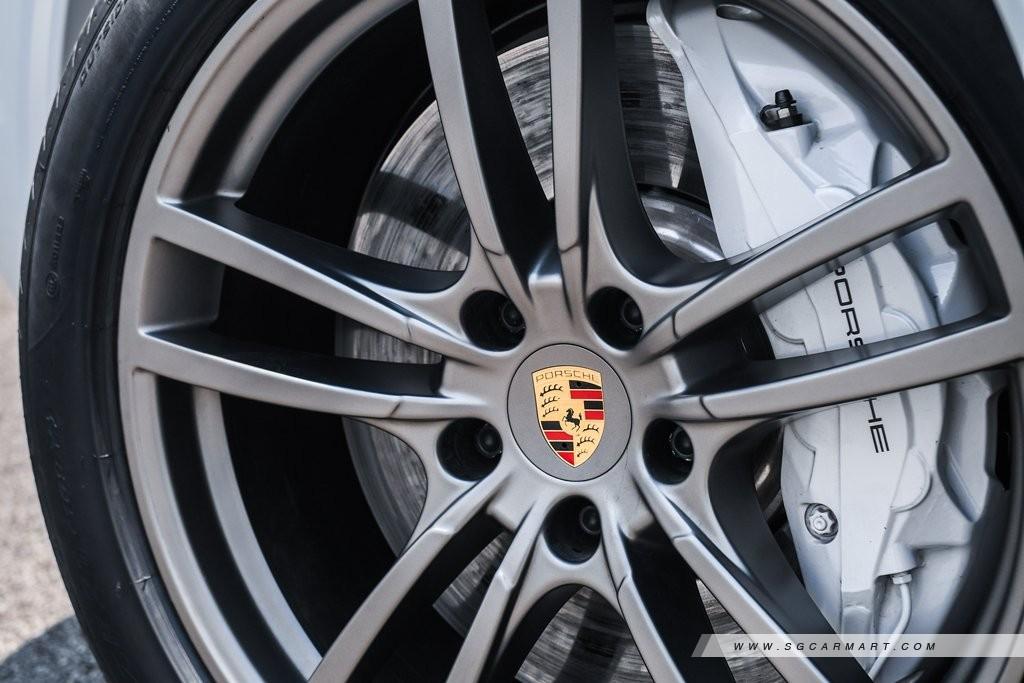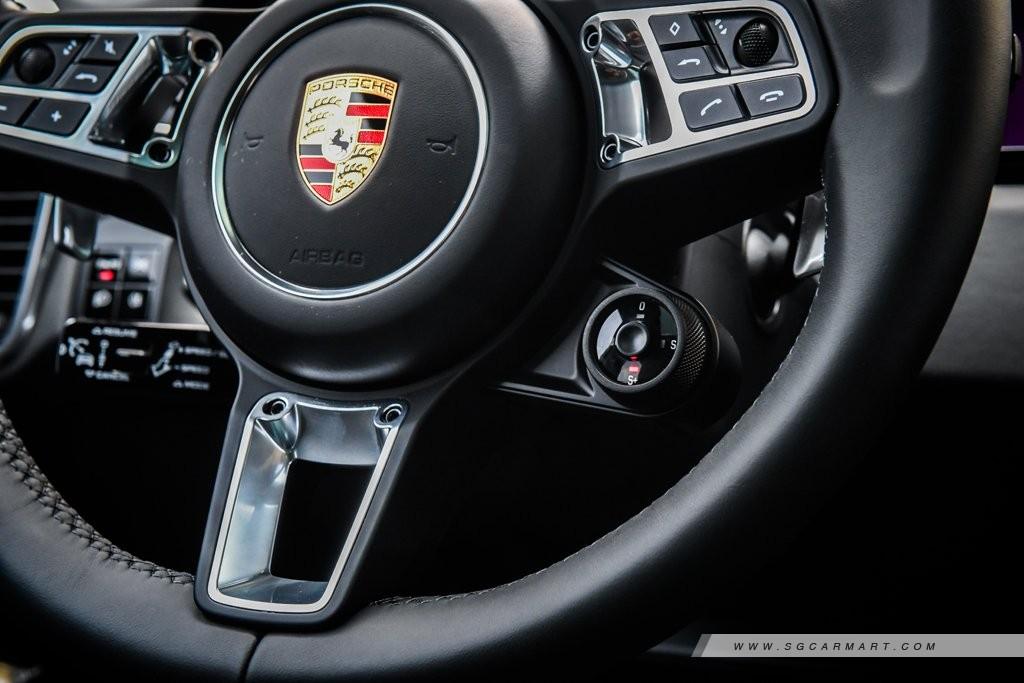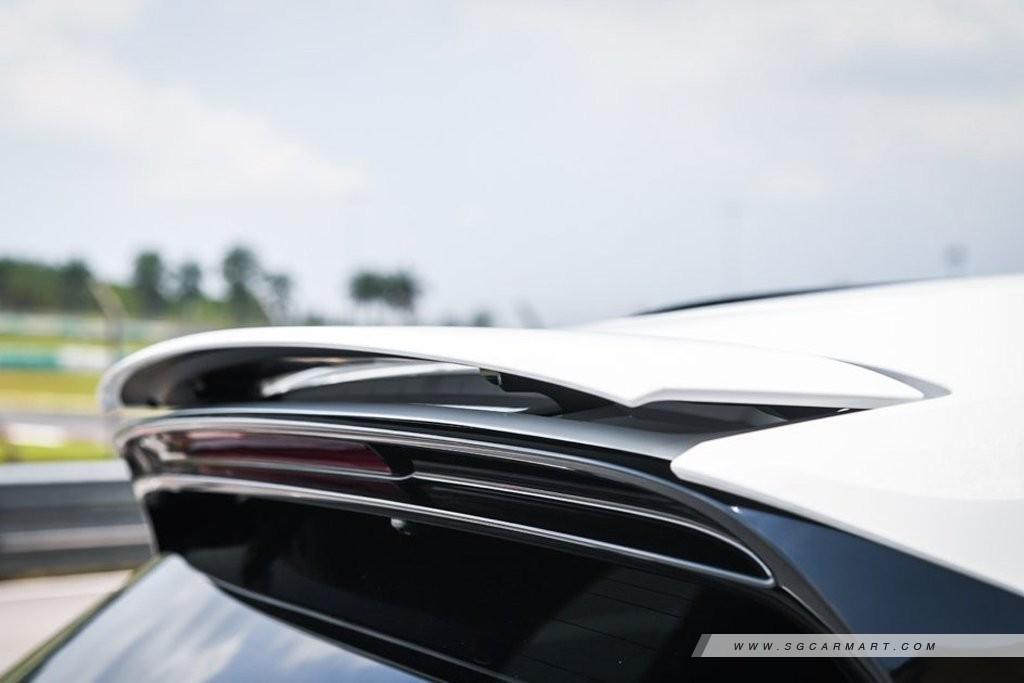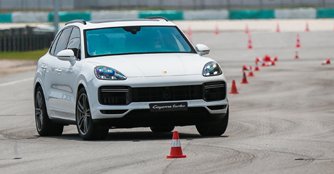Five standout features of the new Porsche Cayenne
22 Mar 2018|24,321 views
The Macan may be the best-selling Porsche, having sold 97,000 units in 2017, but the new third generation Cayenne, which will be available in Singapore from 28th March 2018, promises further growth.
It, too, is a successful model and the latest iteration combines even more of the typical Porsche performance with excellent everyday practicality. As Porsche calls it, it is the epitome of the Sport Utility Vehicle (SUV).
All of the core components of the new Cayenne are new developments. Through specially curated activities such as handling exercises, slalom stations and braking challenges, as well as an off-road circuit, we experienced how these technologies in the new Cayenne redefine the SUV segment.
1. Rear-axle steering
The Cayenne is available for the first time with rear-axle steering, which is as an optional feature on the base and S models, and standard on the Turbo.
With this, the rear axles steer in opposite directions under 80km/h and in the same direction at higher speeds. This affords significantly higher agility and improved steering precision, easier manoeuvring around tight spaces, and also greater stability when you're driving around corners quickly.
The Cayenne's turning radius is reduced from 12.1m to 11.5m and while that may not seem like much, the difference is immediately noticeable around a slalom or a U-turn.
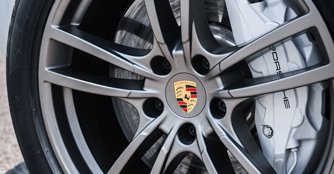
A world-first in the new Cayenne and standard on the Turbo, PSCB is available as on option for all other Cayenne models. Like the higher-end Porsche Ceramic Composite Brake, PSCB employs 10-piston calipers up front and four-pistons at the rear.
But the core of PSCB technology are discs with an exceptionally hard tungsten-carbide coating, combined with specially developed brake pads that boast 30 percent longer service life, for example.
It also generates less brake dust and more importantly delivers improved responsiveness and stable braking even under extreme stress. A side effect of PSCB is a unique appearance of the discs that have a polished, gleaming shine after about 600km of day-to-day driving.
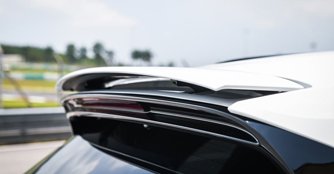
Nothing shouts sports car more than an active spoiler and the new Cayenne Turbo is the first SUV in the world to feature one on its roof, like with the 911 Turbo.
Above speeds of 160km/h, it tilts by six degrees, increasing downforce. In Sport Plus mode, the angle changes as much as to 12.6 degrees. To compensate air turbulence for when the panoramic roof is open, it'll tilt to a maximum of 19.9 degrees.
Likewise, it'll adjust accordingly, up to 28.2 degrees, when you're braking rapidly at speeds between 170km/h and 270km/h. Think of it acting as an airbrake, which can reduce the braking distance by up to 2m.
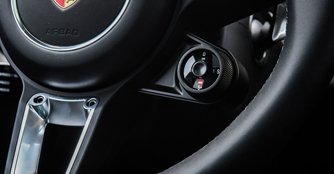
Like in the 911, the optional Sport Chrono Package allows for various driving modes via a switch on the steering wheel. In addition to Normal, Sport and Sport Plus modes, there's also an Individual mode.
A first for the new Cayenne is the Sport Response button, which enables optimised performance and ultra-high response for 20 seconds.
Think of it as 'NOS' in Need For Speed but unlike the game, the Cayenne's boosted performance can be used as often as required and can be ended manually whenever. At the same time, PSM Sport mode allows one to take the car closer to its limits when tuned for maximum sporty performance.
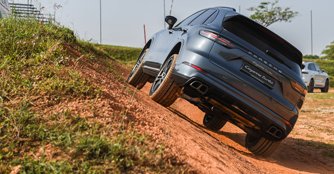
Although most Cayenne drivers will never take it off-roading, it's actually purpose-built to take on the worst of Mother Nature, thanks to the optional three-chamber air suspension, a ground clearance of 240mm, a ramp angle of over 21 degrees and a fording depth of 525mm.
And fundamental to this capability are the five newly defined off-road modes, which depending on the selection, optimally conditions the engine idling, the shifting of the transmission, all-wheel drive and the PSM stabilisation.
The different modes also adjust the air suspension to adapt to the ground clearance needed for the particular type of off-road setting; gravel, mud, sand or rocks.
The Macan may be the best-selling Porsche, having sold 97,000 units in 2017, but the new third generation Cayenne, which will be available in Singapore from 28th March 2018, promises further growth.
It, too, is a successful model and the latest iteration combines even more of the typical Porsche performance with excellent everyday practicality. As Porsche calls it, it is the epitome of the Sport Utility Vehicle (SUV).
All of the core components of the new Cayenne are new developments. Through specially curated activities such as handling exercises, slalom stations and braking challenges, as well as an off-road circuit, we experienced how these technologies in the new Cayenne redefine the SUV segment.
1. Rear-axle steering
The Cayenne is available for the first time with rear-axle steering, which is as an optional feature on the base and S models, and standard on the Turbo.
With this, the rear axles steer in opposite directions under 80km/h and in the same direction at higher speeds. This affords significantly higher agility and improved steering precision, easier manoeuvring around tight spaces, and also greater stability when you're driving around corners quickly.
The Cayenne's turning radius is reduced from 12.1m to 11.5m and while that may not seem like much, the difference is immediately noticeable around a slalom or a U-turn.

2. Porsche Surface Coated Brakes (PSCB)
A world-first in the new Cayenne and standard on the Turbo, PSCB is available as on option for all other Cayenne models. Like the higher-end Porsche Ceramic Composite Brake, PSCB employs 10-piston calipers up front and four-pistons at the rear.
But the core of PSCB technology are discs with an exceptionally hard tungsten-carbide coating, combined with specially developed brake pads that boast 30 percent longer service life, for example.
It also generates less brake dust and more importantly delivers improved responsiveness and stable braking even under extreme stress. A side effect of PSCB is a unique appearance of the discs that have a polished, gleaming shine after about 600km of day-to-day driving.

3. Adaptive roof spoiler
Nothing shouts sports car more than an active spoiler and the new Cayenne Turbo is the first SUV in the world to feature one on its roof, like with the 911 Turbo.
Above speeds of 160km/h, it tilts by six degrees, increasing downforce. In Sport Plus mode, the angle changes as much as to 12.6 degrees. To compensate air turbulence for when the panoramic roof is open, it'll tilt to a maximum of 19.9 degrees.
Likewise, it'll adjust accordingly, up to 28.2 degrees, when you're braking rapidly at speeds between 170km/h and 270km/h. Think of it acting as an airbrake, which can reduce the braking distance by up to 2m.

4. Sport Chrono Package (with Sport Response and PSM Sport)
Like in the 911, the optional Sport Chrono Package allows for various driving modes via a switch on the steering wheel. In addition to Normal, Sport and Sport Plus modes, there's also an Individual mode.
A first for the new Cayenne is the Sport Response button, which enables optimised performance and ultra-high response for 20 seconds.
Think of it as 'NOS' in Need For Speed but unlike the game, the Cayenne's boosted performance can be used as often as required and can be ended manually whenever. At the same time, PSM Sport mode allows one to take the car closer to its limits when tuned for maximum sporty performance.

5. Five programmed modes for on and off-road
Although most Cayenne drivers will never take it off-roading, it's actually purpose-built to take on the worst of Mother Nature, thanks to the optional three-chamber air suspension, a ground clearance of 240mm, a ramp angle of over 21 degrees and a fording depth of 525mm.
And fundamental to this capability are the five newly defined off-road modes, which depending on the selection, optimally conditions the engine idling, the shifting of the transmission, all-wheel drive and the PSM stabilisation.
The different modes also adjust the air suspension to adapt to the ground clearance needed for the particular type of off-road setting; gravel, mud, sand or rocks.
Thank You For Your Subscription.
